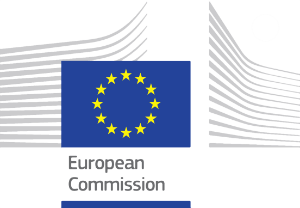The ReInHerit project (ID No 101004545) was funded under the EU Horizon 2020 Programme as a Coordination and Support Action (hereafter CSA) which funds activities consisting primarily of accompanying measures such as standardisation, dissemination, awareness-raising and communication, networking, coordination or support services, policy dialogues and mutual learning exercises and studies, including design studies for new infrastructure and may also include complementary activities of strategic planning, networking and coordination between programmes in different countries. Aligned with CSA, the aim of the project was to create a model of sustainable heritage management for fostering a digital dynamic European network of heritage stakeholders through the Digital Hub. The ReInHerit Digital Hub provides to relevant stakeholders (museums, heritage sites, policy makers, professionals and communities) with the tools and resources to communicate, experiment, innovate and disseminate European cultural heritage.
To achieve this, the project was implemented by adopting a bottom-up approach, meaning that involved the consortium partners and external museum and heritage professionals from the beginning. The collaboration in the project was divided into three phases. The aim of the first phase was to identify the sector’s needs, challenges and practices across Europe by using quantitative and qualitative research methods (desk research, focus group interviews and questionnaires). During this phase the consortium partners held multiple ideation workshops for formulating the focus group interview questions and the questionnaires to gain information from professionals and visitors with the aim on how to develop the Digital Hub and its resources. A comprehensive map of the stakeholder’s practices and perceptions on European cultural heritage was created with the produced (qualitative and quantitative data) and allowed the partners responsible for developing the exhibitions and the digital apps to (cross)examine the needs, challenges and practices of the sector across different levels. In doing so, the consortium collected important information on the digital transformation of heritage sites and museums, its impact, innovation potential and sustainability; these were the core issues for building the ReInHerit digital ecosystem and management model. This phase developed a set of requirements that paved the roadmap for an impactful implementation for the second phase, which included the development of the ReInHerit Toolkit and Digital Hub, and, finally, the pilot phase where stakeholders were provided with access to the Toolkit through the Digital Hub and additional testing, workshops and hackathons took place for interacting with potential users and evaluating the projects’ outcomes.
In this project, sustainability was considered as a medium for developing a long-term strategic heritage management policy that can provide museums and heritage sites (particularly small- and medium-sized) with the abilities to adapt to new audiences, new forms of communication, new organizational structures, and technologies. The utility of the sustainability mind-frame was used to incite rethinking about patterns of consumption and current practices, modes of operation and managerial organization for achieving long-term impact. This was aligned with the need to develop an innovative Digital Hub. Innovation was understood in the ReInHerit project as an ongoing process that creates new products, methods and/or processes. It is a process of modification, conversion, translation, application in which a creative product is made into something that is concretely useful and has a new value (practice & improvement). In accordance with OECD (Oslo Manual, 2018), the result of the innovation process is “a new or improved product or process (or combination thereof) that differs significantly from the unit’s previous products or processes and that has been made available to potential users.” An important aspect of innovation in the ReInHerit project was social innovation deriving from the relationship between services/objects and people (how these services are used, their meaning, the relationships between services), which can lead to new ways of inclusion in heritage and improve the welfare and wellbeing of communities. For the European Commission (New European Innovation Agenda, Commission Staff Working Document, 2022, p2), “innovation is key in a global context that can accelerate the transition to sustainable development, while improving our well-being, reducing inequalities and ensuring longer-term prosperity”.
The adoption of digital technologies (that integrate physical and digital interactions) in museums and heritage sites has been aligned with social innovation: the democratic and inclusive approach to heritage management that has been taking place in recent decades. ReInHerit project has identified a core issue in this: sustainable digital transformation has not been fully implemented (digital solutions are outsourced and heritage professionals are not active agents in digital transformation) for all museums. Tackling the issue of a sustainable digital transformation can lead to disruptive innovation in cultural heritage management. This means the implementation of solutions that are capable of radically changing the market behavior in the heritage sector for the different stakeholders. Innovation in ReInHerit addresses a key priority of the European Commission which is aligned with the New European Innovation Agenda:
“A Europe fit for the digital age: empowering people with new generation technologies”
The aim with this priority is to achieve digital transformation that will enhance both economic and environmental efficiency while developing new sustainable, circular and inclusive ways to satisfy human needs and wellbeing. The ReInHerit project contributes to this by providing innovative solutions (processes and products, see figure below) that enables the formation of a sustainable heritage management by creating a guided path through learning resources, prototypes and codes, best practices and handbook, webinars that can help museum and heritage professionals recreate, adopt and adapt the ReInHerit’s Digital Toolkit and exhibitions.

